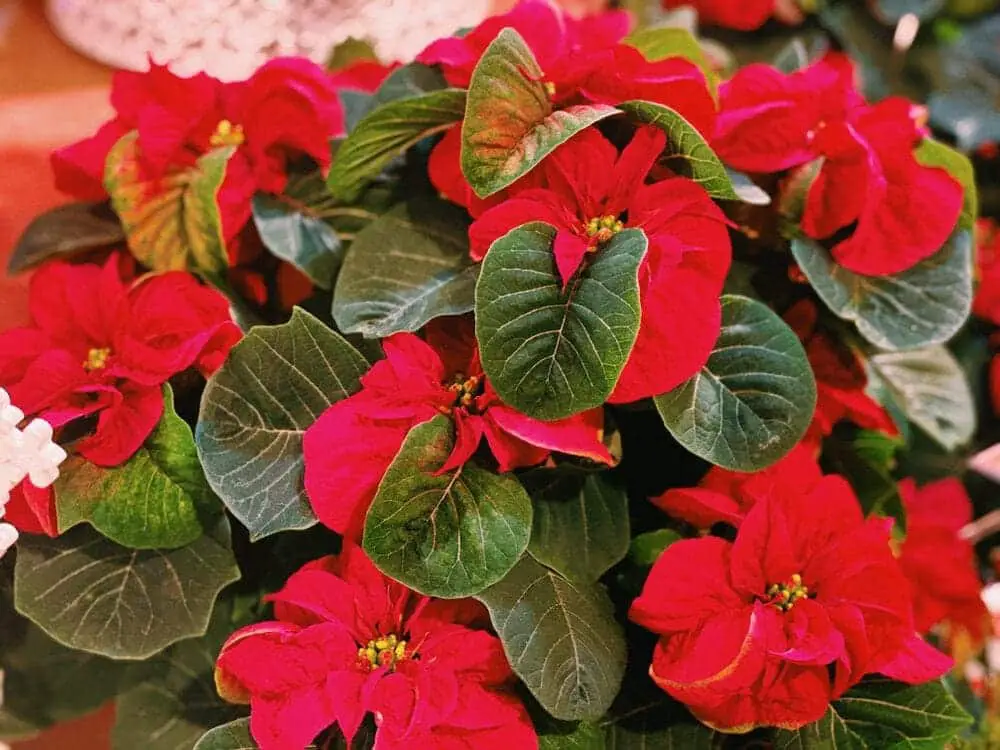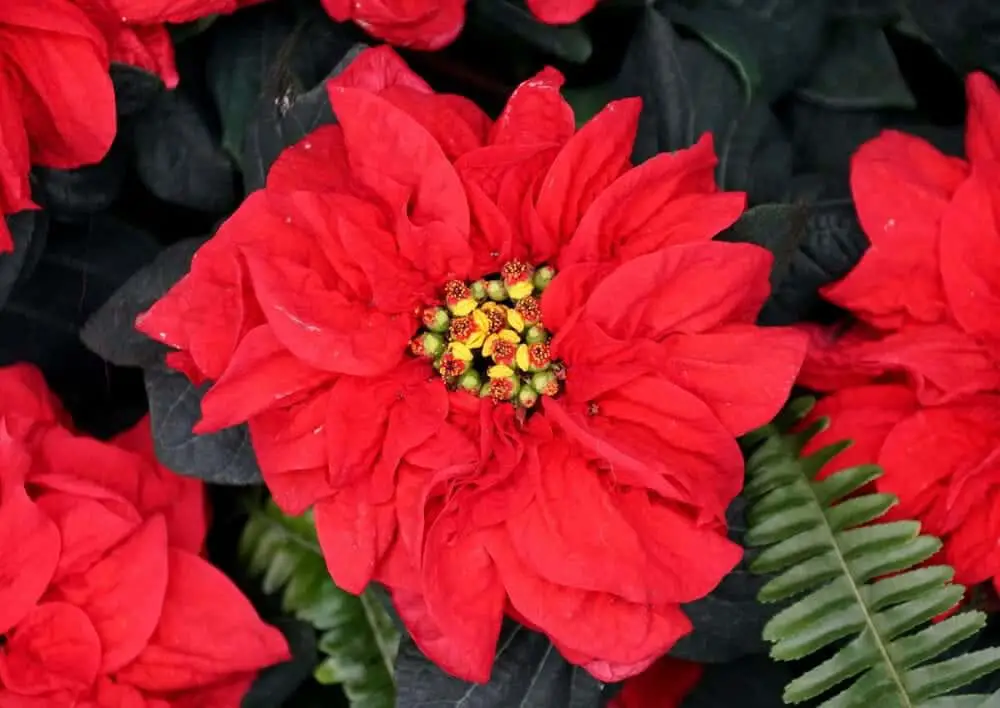If you’re like most people, you probably think of poinsettias as Christmas flowers. But did you know that these beautiful plants are actually native to Mexico?
Although they are often associated with the holiday season, poinsettias can actually be grown year-round with the right care. Keep reading to learn everything you need to know about winter rose poinsettia care and growing!
What is a Winter Rose Poinsettia?
The Winter Rose (Poinsettia) is a member of the Euphorbia family, which includes over 2,000 species of plants. It’s native to Mexico and can grow to be over 12 feet tall in its natural habitat!
The winter rose can be a difficult plant to grow, but if you give it the right conditions and care then this beautiful flower will reward your efforts with repeated blooms all throughout winter.
Winter Rose Poinsettia Care & Growing Guide
1. Light Requirement
The Winter Rose Poinsettia does best in light that is indirect and bright but no direct sun.
2. Water
It is important that you never over-water this plant. Always allow the top layer to drive out 50% before you water it. This helps to prevent root rot. When you water your poinsettia, make sure that you do not get the leaves wet. You should water around the base of the poinsettia.
3. Climate
USDA Hardiness Zone 9-11
4. Soil
The Winter Rose Poinsettia needs to be grown in a porous, loose, soil that drains well. You can use a premixed pasteurized soil or make your own from one part perlite, two parts organic matter like peat moss, and three parts sterilized soil.

5. Temperature
You need to make sure that the temperature stays between 60-70 degrees Fahrenheit because this plant is not frost tolerant.
6. Repotting
After trimming, remove it from the pot and get rid of as much soil as you an. Replace it in either a new pot or you can use the same one, with new soil. Water it enough to soak the soil completely. Allow it to drain for a few minutes and then you need to water it again.
7. Speed of Growth
Most Winter Rose Poinsettia is given as a gift so they are already grown and then after Christmas, they are discarded. It will take a year for them to re-grow if you want to try to get them to bloom another time.
8. Height and Spread
Some poinsettias have been grown that was seven feet tall and just as wide but on average, the Winter Rose Poinsettia will be no more than 8-24 inches tall and possibly 24 inches wide.
9. Flowers
On a Winter Rose Poinsettia, the bracts, or false flowers, are smaller and tend to curl under. You can find these in marble, white, and pink. The flower is modified leaves so that is why they are considered “false” flowers. The actual flowers are the small yellow clusters called cyathia that are found in the center of the bracts. Sometimes these bracts will last up to five months but some only last a couple of months.
10. Trimming
When you trim the poinsettia in May, trim it down to where there are only about four inches of stem above the soil.

Is Winter Rose Poinsettia Poisonous?
Although they are not poisonous to animals or humans, they do have a milky sap that can cause skin irritation for some people. If the plant is eaten, it can cause mild stomach discomfort.
Similar post: Calandiva: Plant Care
Can Winter Rose Poinsettia Grow in Water?
No, it cannot be grown in water.
Also read:
How to get Winter Rose Poinsettia to Flower?
It is difficult to get them to bloom, or flower, more than once but it can be done. It takes time and patience. There are steps you need to follow precisely to have any chance of it blooming again. After the leaves have fallen off, around April, slowly cut back on the watering, giving it less water each time but do not let the stems shrivel. After two weeks, move it to a cooler location that stays around 60 degrees Fahrenheit. This could be a garage or basement.
Near the end of May, you need to trim it. See (trimming section), then see (repotting section). Once you start to see new growth, you can start feeding it every couple of weeks with a household fertilizer.
In late June, you can move it outside where it will get a lot of indirect sunlight. You can let it have no more than an hour of direct sunlight. By mid-August, the new stems should have branched out and you should start to see new leaves. You will need to trim it again with only three or four leaves on each stem. This is when you bring the Winter Rose Poinsettia back inside to the windowsill again. You should continue to water and fertilize the plant in the spring and summer.
As they are a short day, long night type of plant, in October they will need less than 10 hours of light so they can start to change color. Every night they need to be in complete darkness from 5 p.m. to 8 a.m. and given indirect light during the day at least through Thanksgiving. If you have followed this completely, you should see the Winter Rose Poinsettia almost looking as it did when you first got it. It may not have as many bracts as it did in the beginning, though.
Learn more: Spider Lily: Plant Care & Growing Guide
Common Winter Rose Poinsettia Plant Diseases
Winter Rose Poinsettia is prone to a variety of diseases, including:
- Bare stems and leaves falling off—this is because you have over-watered your poinsettia.
- Root rot—also because of over-watering
- Drooping and leaves dropping off—this is when you have under-watered your Winter Rose Poinsettia.
- White marks on the flowers—when watering you have dropped water on the flowers.
More like this:
- Purple Waffle Plant Care & Growing guide
- Rock Cress Flowers (Aubrieta deltoidea) Care Guide
- Thryallis Plant Care & Growing Guide
Conclusion
- If you put your poinsettia in the window, make sure that none of the leaves touch the glass. This is because the cold will damage the plant.
- They are a member of the Euphorbia family.
- All poinsettias are a very popular Christmas flower with the Winter Rose Poinsettia being one that is most sought after.
- It is a native of Mexico and was introduced to America in 1925.
- The Winter Rose Poinsettia generally lasts eight weeks, from November to the end of December, unless you are going to try to get it to re-bloom.
Victoria is the owner and main author of hobby plants. She loves spending her free time in her garden planting and taking care of her plants. Victoria hopes you enjoy the content here!